2 Minute Back Warm-Up Exercises to Crank Up the Muscle Heat

Feeling a little stiff before your workout? Don’t worry; we’ve got your back [pun-intended]! In just two minutes, we’ll show you how to warm up back muscles with some quick and effective back back warm up exercises. Say goodbye to the shivers and hello to a flexible, ready-to-rock back!
Before getting down to the back warm up exercises, let’s take a look at your back anatomy:
Your Back is Divided into Two Regions
The upper back and the lower back. Each region consists of several key muscle groups:
Upper Back:
Trapezius Muscle: This large, kite-shaped muscle covers the upper part of the back and has three portions (upper, middle, and lower) that are responsible for various movements, including shoulder blade retraction and elevation.
Rhomboid Muscles (Major and Minor): These muscles lie beneath the trapezius and assist in retracting the shoulder blades.
Levator Scapulae: Located along the sides of the neck and upper back, these muscles help elevate the shoulder blades.
Posterior Deltoids: These shoulder muscles are also engaged during upper back movements.
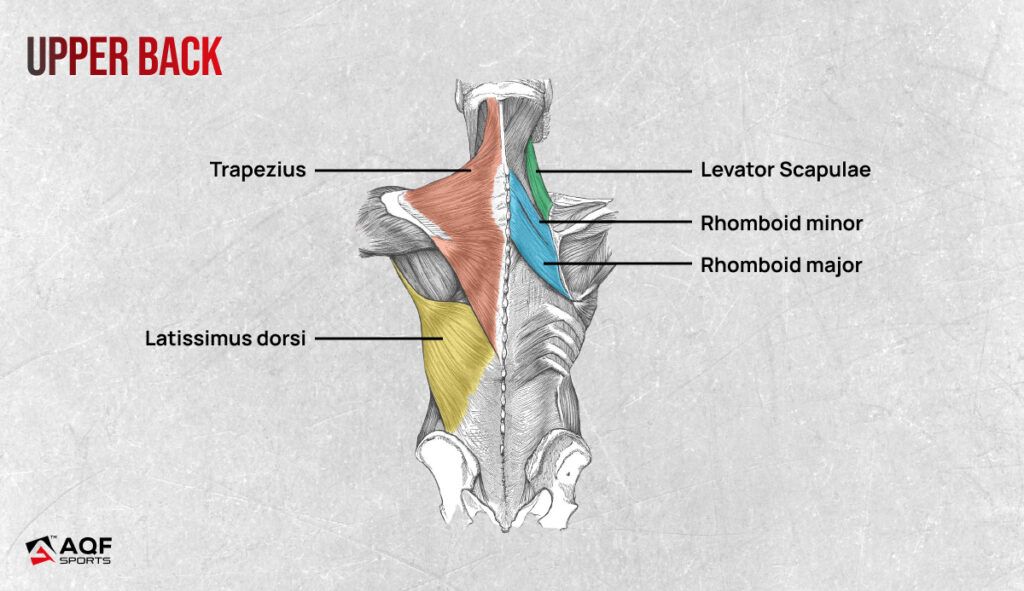
Lower Back:
Erector Spinae: This group of muscles runs along the spine’s length and is responsible for spinal extension, providing support to maintain an upright posture.
Latissimus Dorsi (Lats): These large, fan-shaped muscles cover the lower and mid-back and assist in movements like pulling and extending the arms.
Quadratus Lumborum: Located on the sides of the lower back, this muscle helps stabilize the spine and is involved in lateral movements.
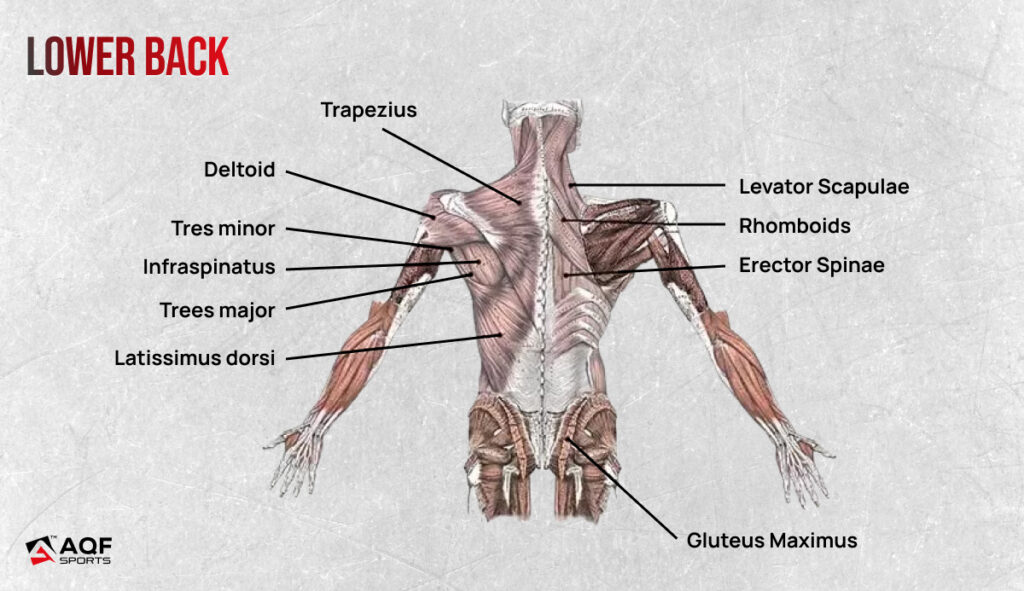
Back Warm-Up Exercises Engage and Target These Muscles:
Back warm-up exercises primarily target the following muscle groups in the back anatomy:
- Scapular Muscles: Including the trapezius, rhomboids, and levator scapulae.
- Rear Deltoids: Engaged during shoulder-related warm-up exercises.
- Erector Spinae: Actively involved in exercises that promote spinal mobility.
- Lats (Latissimus Dorsi): Targeted during movements that engage the upper back.
2 Minute Back Warm Up Exercises for All Skill Levels
Arm Circles:

- Muscles Targeted: Rotator cuff, upper back, and shoulders
- How to Do:
- Stand with your feet shoulder-width apart.
- Extend your arms straight out to the sides.
- Make small circles with your arms, gradually increasing the size of the circles.
- After about 20 seconds, reverse the direction of the circles.
Cat-Cow Stretch:
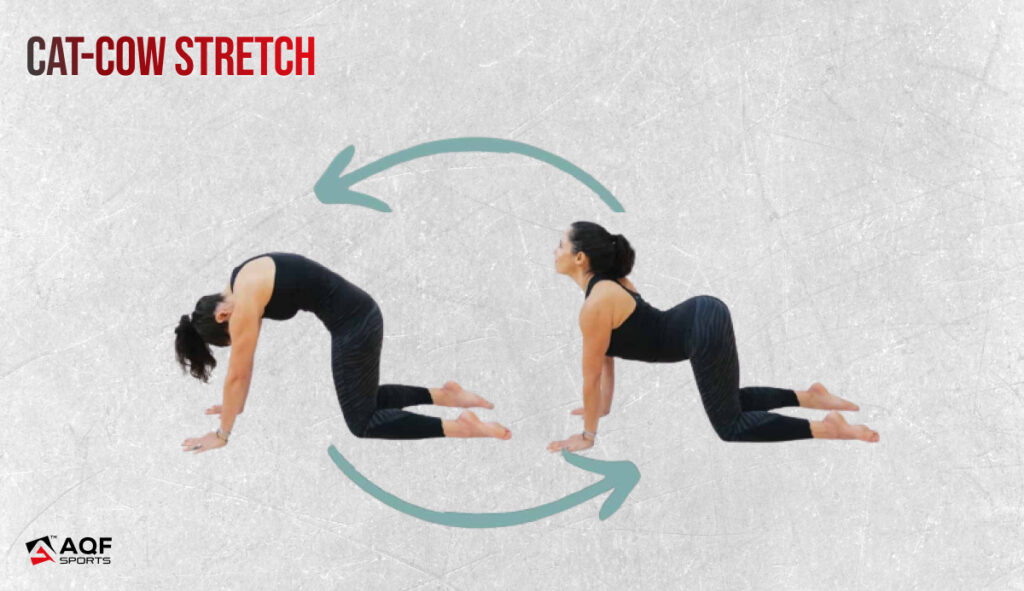
- Muscles Targeted: Lower and upper back, spinal flexibility
- How to Do:
- Start on your hands and knees in a tabletop position.
- Inhale, arch your back, and lift your head (Cow position).
- Exhale, round your back, and tuck your chin (Cat position).
- Alternate between these two positions for about 30 seconds.
Thoracic Rotations:
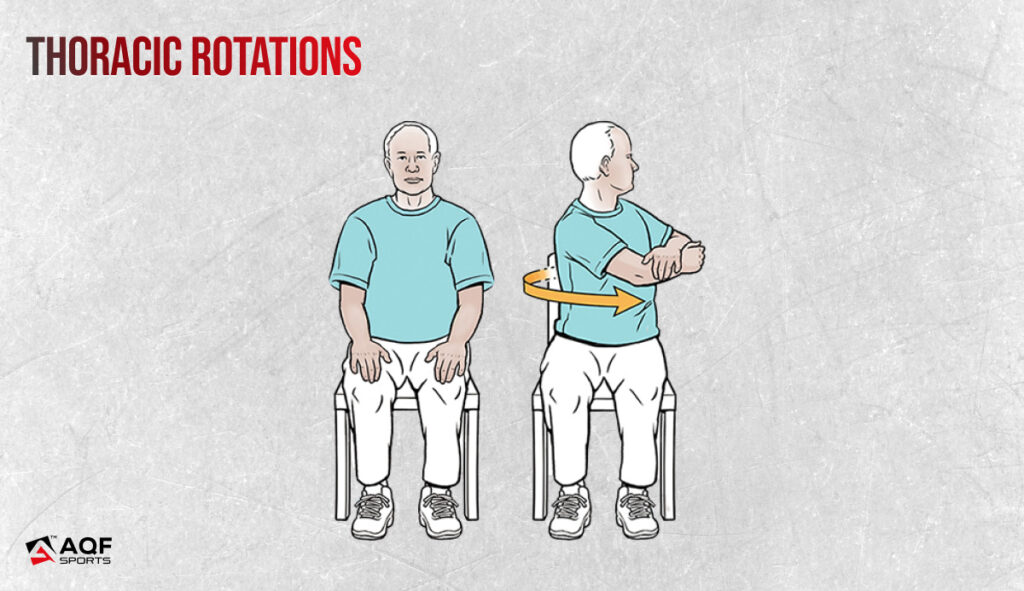
- Muscles Targeted: Thoracic spine (upper and middle back)
- How to Do:
- Sit or stand with your feet hip-width apart.
- Clasp your hands together and extend your arms in front of you.
- Twist your torso to one side, then the other, keeping your hips facing forward.
- Repeat this motion for about 20 seconds.
Scapular Wall Slides:
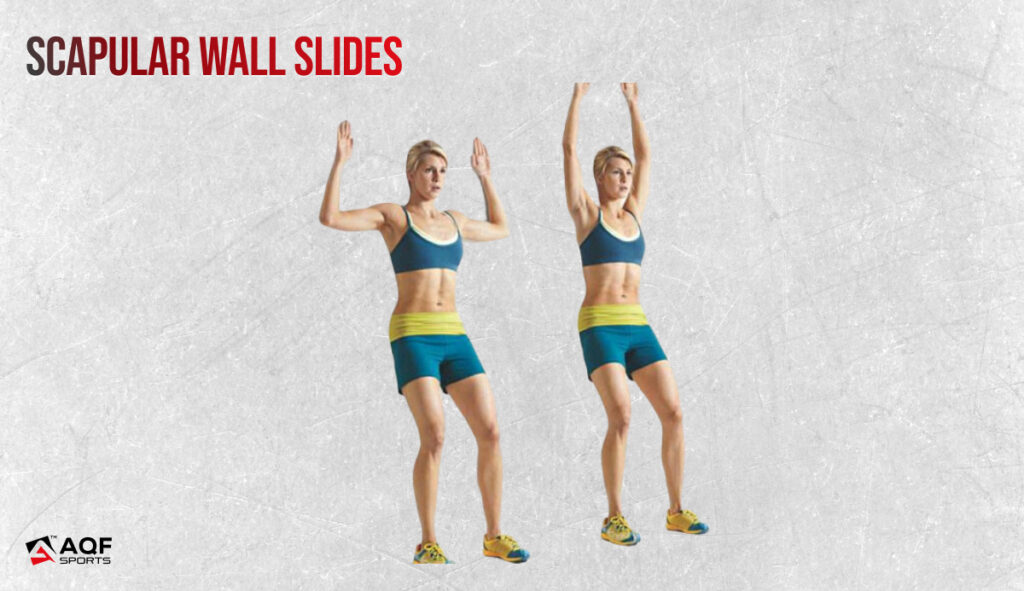
- Muscles Targeted: Scapular muscles, upper back
- How to Do:
- Stand with your back against a wall and your arms at shoulder level, elbows bent.
- Slide your arms up the wall while keeping your elbows and wrists in contact with it.
- Once you reach as high as you can, slide your arms back down.
- Perform 10-12 slides to warm up the scapular muscles.
Reverse Snow Angels:

- Muscles Targeted: Upper back, shoulders, and scapular muscles
- How to Do:
- Lie face down on the floor with your arms extended overhead.
- Lift your arms off the ground and sweep them out to your sides in an arc.
- Bring your arms back to the starting position.
- Repeat this motion for about 15-20 seconds.
Child’s Pose:
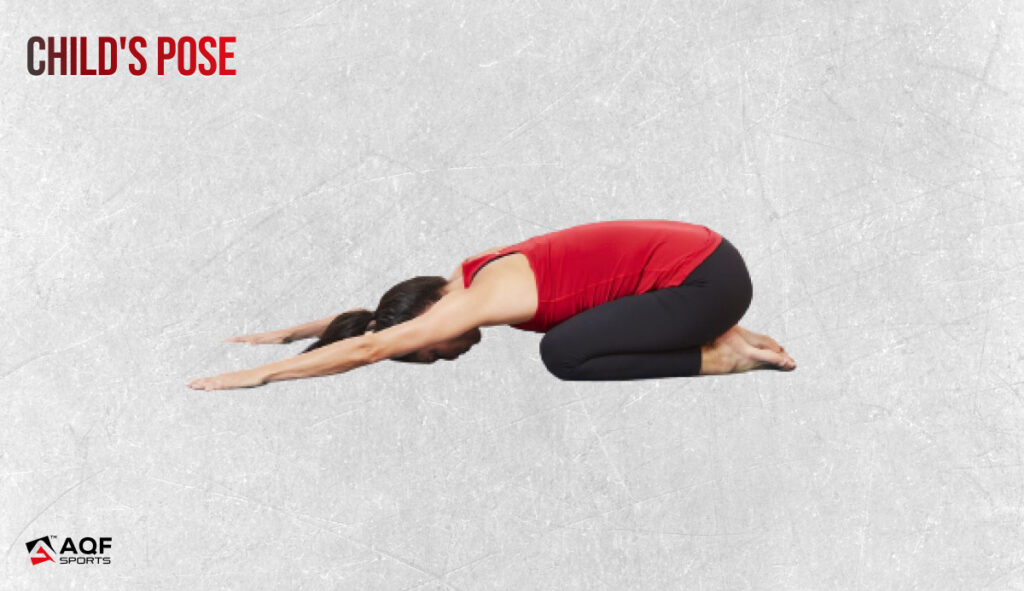
- Muscles Targeted: Lower back, lats, and spinal flexibility
- How to Do:
- Start on your hands and knees in a tabletop position.
- Sit back on your heels while reaching your arms forward.
- Hold this stretch, feeling a gentle stretch in your lower back, for about 20-30 seconds.
Standing Shoulder Blade Squeezes:
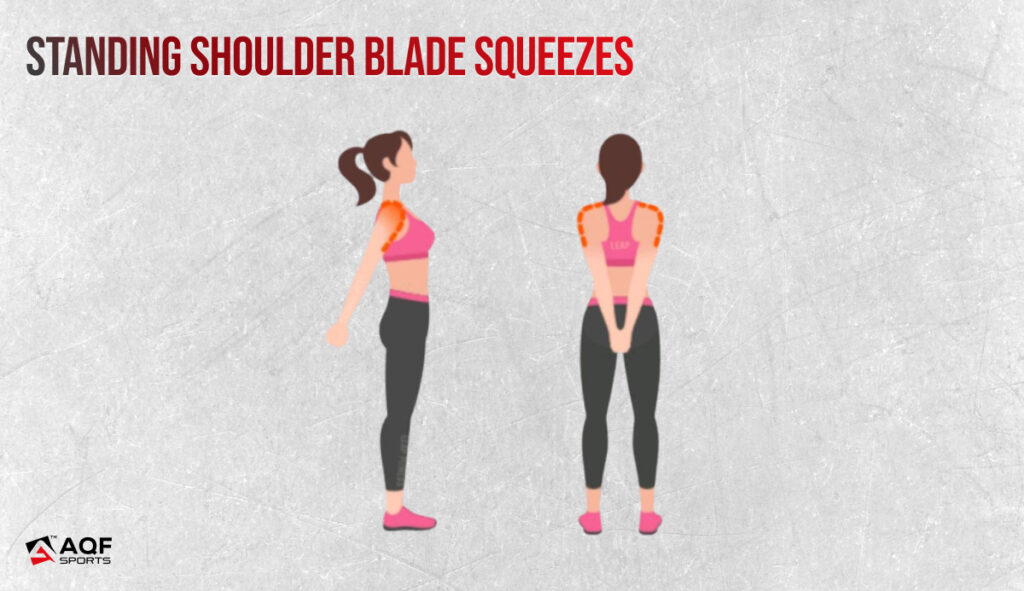
- Muscles Targeted: Scapular muscles, upper back
- How to Do:
- Stand with your arms at your sides.
- Squeeze your shoulder blades together as if trying to hold a pencil between them.
- Hold for a few seconds, then release. Repeat for about 15-20 seconds.
Prone Ys and Ts:

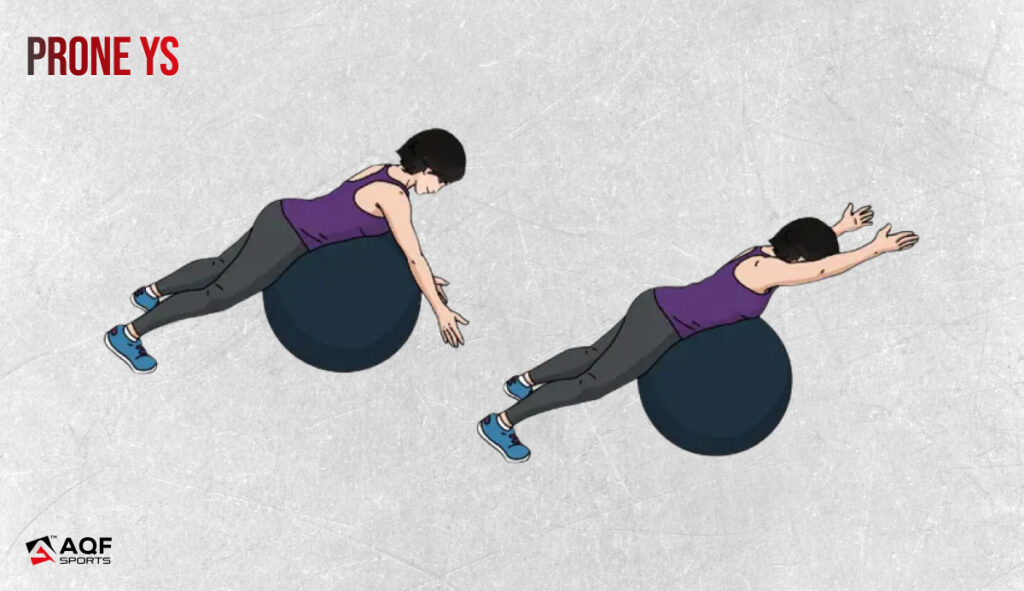
- Muscles Targeted: Upper back, rear deltoids, scapular muscles
- How to Do:
- Lie face down on an exercise ball with your arms extended in a Y shape (arms overhead) for a few seconds.
- Then, transition to a T shape (arms out to the sides).
- Alternate between Y and T for about 20-30 seconds.
Quadruped Thoracic Extension:
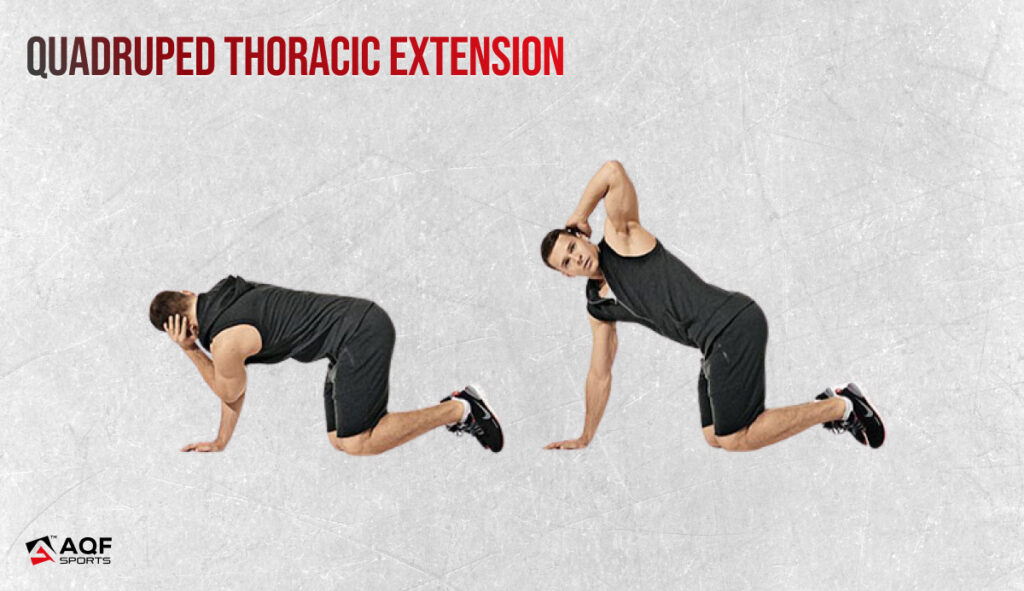
- Muscles Targeted: Thoracic spine, upper back
- How to Do:
- Start on your hands and knees in a tabletop position.
- Arch your back upward, dropping your chest towards the ground.
- Return to a neutral spine, then repeat the extension for about 20-30 seconds.
Band Pull-Aparts:
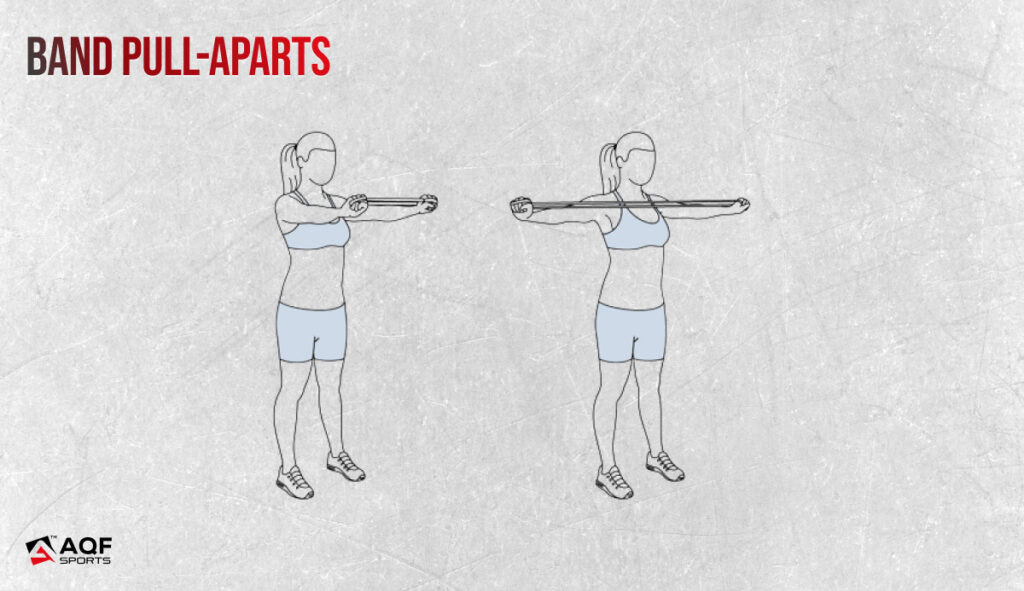
- Muscles Targeted: Rear deltoids, scapular muscles
- How to Do:
- Hold a resistance band in front of you with both hands, arms extended.
- Pull the band apart by moving your hands away from each other, squeezing your shoulder blades.
- Return to the starting position and repeat for about 15-20 seconds.
Cold Back Muscles Are a Result of Inactivity:
When your back muscles are “cold,” they are at a lower temperature than their optimal operating range. This leads to several physiological effects:
Reduced Muscle Elasticity:
Cold muscles have reduced elasticity, meaning they are less flexible and responsive to stretching or contraction. This can limit their range of motion.
Decreased Blood Flow:
Cold muscles have narrowed blood vessels, resulting in reduced blood flow. This restricts the delivery of oxygen and nutrients to the muscles, which are crucial for their energy production and function.
Slower Nerve Impulse Transmission:
The nerve impulses that control muscle contractions transmit more slowly in cold muscles. This sluggish transmission affects muscle response time and coordination.
How Back Warm-Up Helps:
Back Warm-up exercises increase the temperature of the back muscles. This elevation in muscle temperature improves their elasticity, making them more pliable and better prepared for stretching and contracting [1].
As you engage in warm-up exercises, your heart rate increases, and blood vessels dilate. This boosts blood flow to the back muscles, providing them with a richer supply of oxygen and nutrients, optimising their function.
Warm-up exercises stimulate the nervous system. This results in faster transmission of nerve impulses to the muscles, improving muscle response time and coordination.
Warm-up exercises activate energy pathways within muscle cells, such as the aerobic system [2]. This ensures that the muscles have a readily available energy source for the upcoming physical activity.
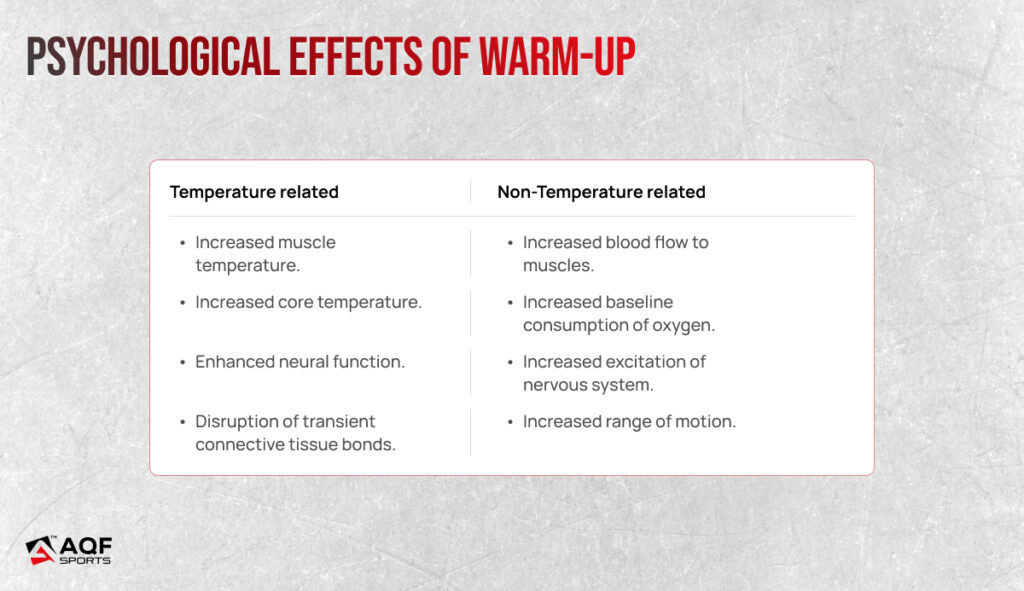
When to Do Back Warm-Up Exercises?
- Before Strength Training:
Perform back warm up exercises prior to engaging in weightlifting or back resistance training that involves the back.
- Before High-Intensity Cardio:
Back warm up exercises prepare your muscles for vigorous cardio activities like rowing, swimming, or high-intensity interval training (HIIT).
- Before Sports and Athletics:
Athletes, gymnasts, swimmers and competitive trainers do back warm up exercises as a part of their pre-competition routine.
- After Prolonged Sitting:
Your back muscles become cold and stiff after sitting for an extended period at work or during travel. In such cases, gentle back warm-up exercises can improve stiffness and prevent discomfort.
Consequences of Skipping Back Warm-Up Exercises:
Back muscles are susceptible to strains, sprains, and other injuries, such as muscle tears or herniated discs. This is because cold muscles are less flexible and more susceptible to damage [3].
Without proper warm-up, the back muscles are not adequately prepared for intense workout demands, leading to potential exercise inefficiency.
Cold and stiff back muscles can restrict your range of motion, create muscular imbalances and cause back discomfort before and after workout.
The Bottomline
Back warm-up exercises will get your back in action, reduce the risk of injuries, and have you ready to conquer whatever lies ahead. So, whether you’re hitting the gym or gearing up for a productive day, take those two minutes to show your back some love.
Explore More Topics
- 5-Minute Full Body Cool Down Exercises – 11 Ways to Relax Your Muscles
- Do Sauna Suits Work for a Better Workout? Busting Sauna Suit Myths Scientifically!
- 19 Gym Essentials Every Fitness Lover Needs
- 7 Essential Boxing Guard Types for Beginners: Ultimate Guide
References:
[1] The effect of warm-ups with stretching on the isokinetic moments of collegiate men
[2] Warm-Up Strategies for Sport and Exercise: Mechanisms and Applications
[3] Lumbar Spine Injuries in Sports: Review of the Literature and Current Treatment Recommendations





